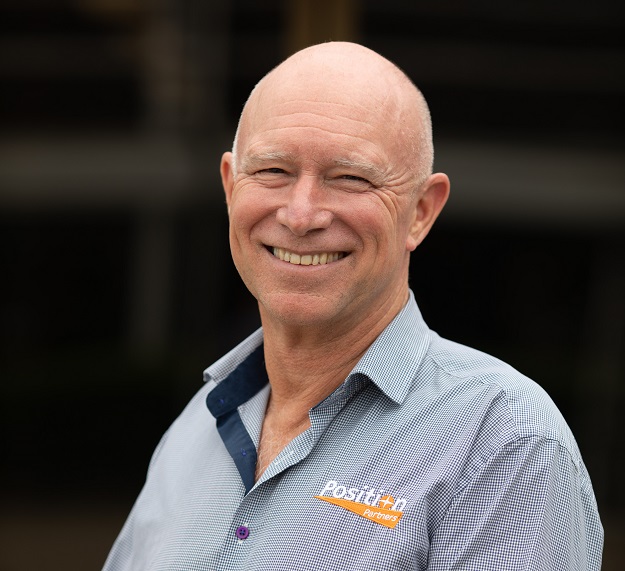
Martin Nix, CEO of Position Partners
In our annual Leaders Forum, we ask experts to look ahead into 2023. Today we talk technology with Martin Nix.
CEO of Position Partners since 2010, Martin Nix was a surveyor until 1984 before joining Leica Geosystems where he held management roles until 2009. He is Co-Chair of Dept of Home Affairs, Space as Critical Infrastructure group, and has participated in working groups related to space policy and positioning infrastructure.
Is the geospatial sector in good shape to help solve the needs of the nation, e.g. climate change, renewable energy, infrastructure projects?
The sector is in good shape generally. However, there are COVID-induced frustrations. Supply chain disruptions, especially in the electronics industry, and key personnel skill and capacity shortages, will continue into 2023. These may delay the uptake of more productive technologies, especially more automated or remotely managed systems.
The electronics disruption and people shortages mean some R&D effort is diverted to keeping current product models functional, delaying innovation in new-generation products. In this regard, some start-ups may inadvertently benefit relative to incumbents as their R&D resources are entirely devoted to new-generation products.
What are the most important challenges facing the sector?
The demand for geospatial data and analysis outstrips the traditional skills and labour capacity to provide it. The surveying profession has adjusted by adopting robotic total stations, GNSS and scanning, but it still has capacity shortages. As geospatial technologies embed into workflows (e.g. machine control systems replace road set out), some activities shift directly to the users of the data. As systems become even more user-friendly and more embedded within automated systems, there will be more uptake by non-survey professionals.
Companies such as Position Partners are well positioned to upskill and support users so that they become geospatial practitioners within their own activities. Wearable scanning systems for maintenance managers and robotic set out tools for builders are recent examples. Further advances in AI will improve the embedding of geospatial data analysis into automated systems to reduce dependence on manpower, particularly for repetitive tasks.
Which technologies or innovations are going to make their mark in 2023?
With AI technology, systems that analyse consolidated data from multiple sensors in real-time will make their mark. There is increased interest for combined image-and-scanning technology, especially wearable and handheld systems that radically speed up acquisition yet provide results and resolutions comparable to tripod-mounted systems.
Nanosatellites will start to impact, with the potential to radically increase the real-time availability of geospatial information. Integrated RTK connectivity and BVLOS flying will increase the use of drones. The construction industry is embracing innovations in set out solutions — robotic set out positioning tools can guide a new mobile printer so that a building layout is printed directly onto the concrete pad.
What’s on your wish list for 2023?
From a regulatory perspective, a better and more consolidated asset management system for our road networks would produce safer roads with better pavement ride quality. In the rail industry and other sectors, we have been recommending less-prescriptive specifications for tenders that are currently biased to older technologies and methods, so that innovations can be better considered. This particularly applies to monitoring applications, where modern wireless platforms can provide continuous measurements at high accuracy and with lower maintenance costs.
What are your customers and collaborators looking for in 2023?
Customers are looking for better workflows and software smarts to reduce some of the manual processing and data analysis, particularly around feature extraction. The drive is towards real-time data and analysis for rapid response or predictive solutions. Accessing big data derived from different sources, including aerial mapping, scanning, monitoring and so on, needs optimising as customers report having to multiple log in to different platforms. One company reported managing 24 different telemetric login platforms!
What are your company’s plans or priorities for 2023?
We will ‘go live’ following a two-year project to implement an entirely new integrated customer, product, service and accounting system. In addition to training, consolidation of customer information and process improvements, it can be expected to improve our people’s engagement with customers. It will also provide a platform for digital support such as better product and system service and support analytics.
This article was first published in Issue 116 (Dec/Jan 2022-23) of Position magazine.
Stay up to date by getting stories like this delivered to your inbox.
Sign up to receive our free weekly Spatial Source newsletter.







